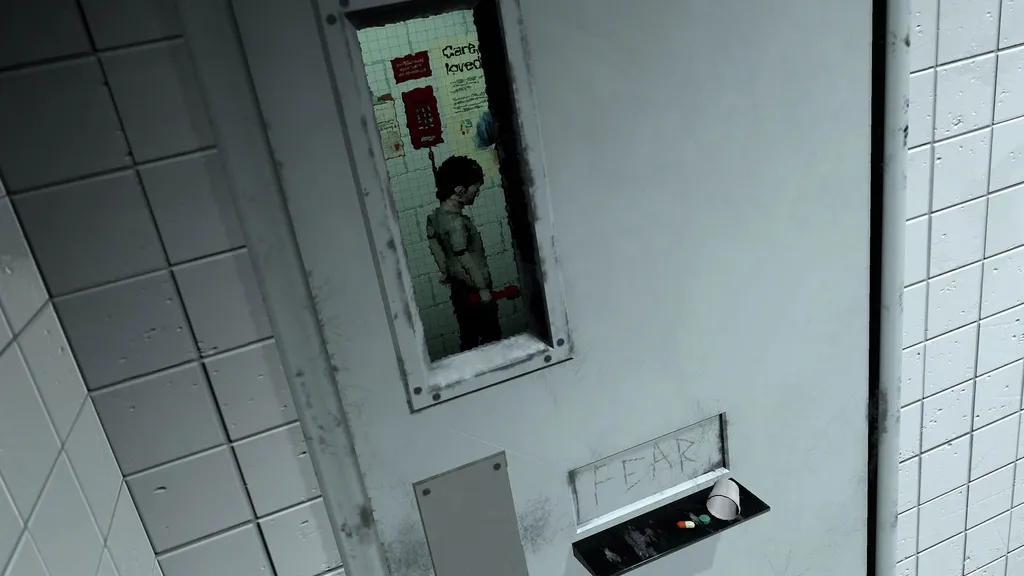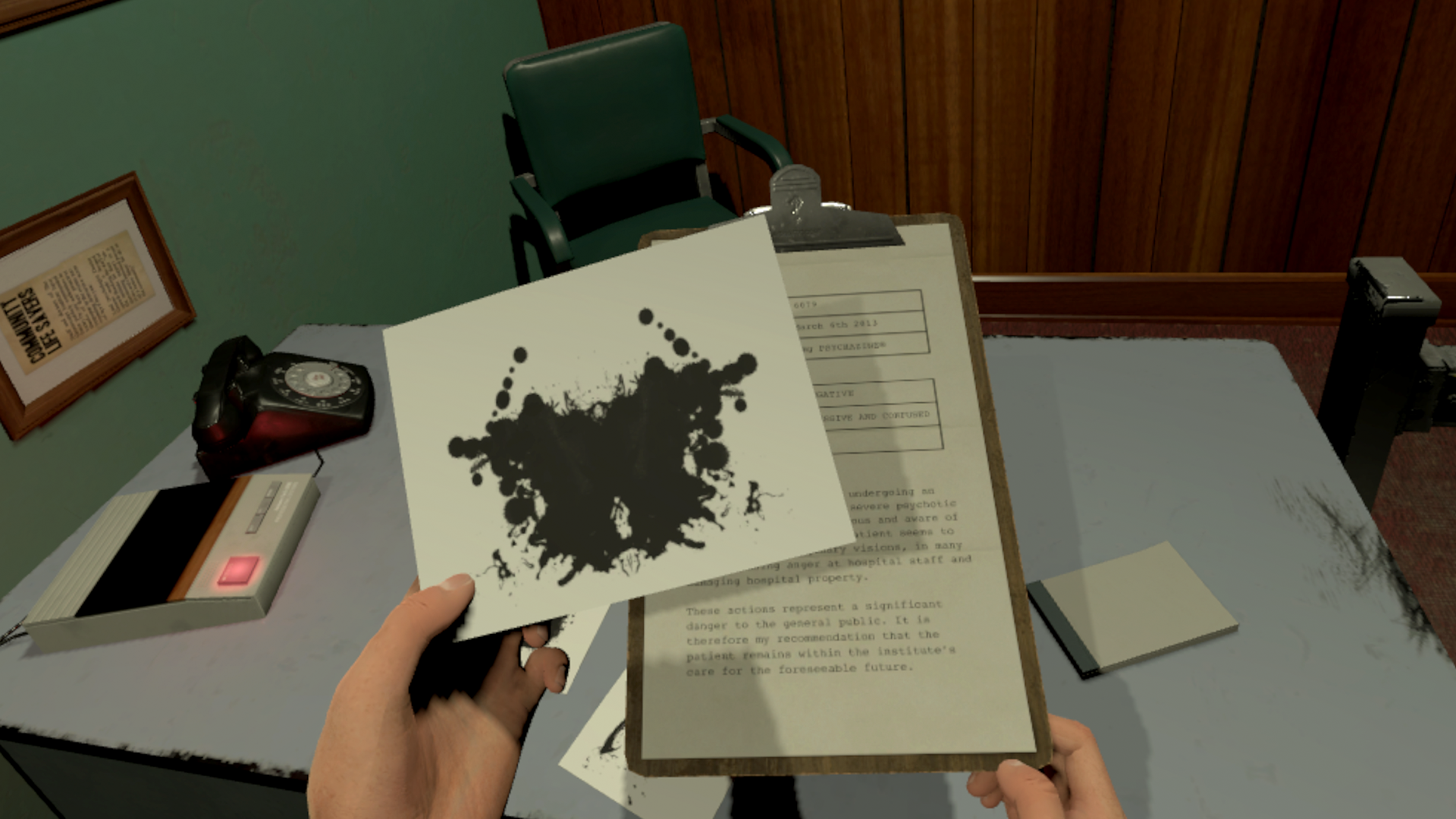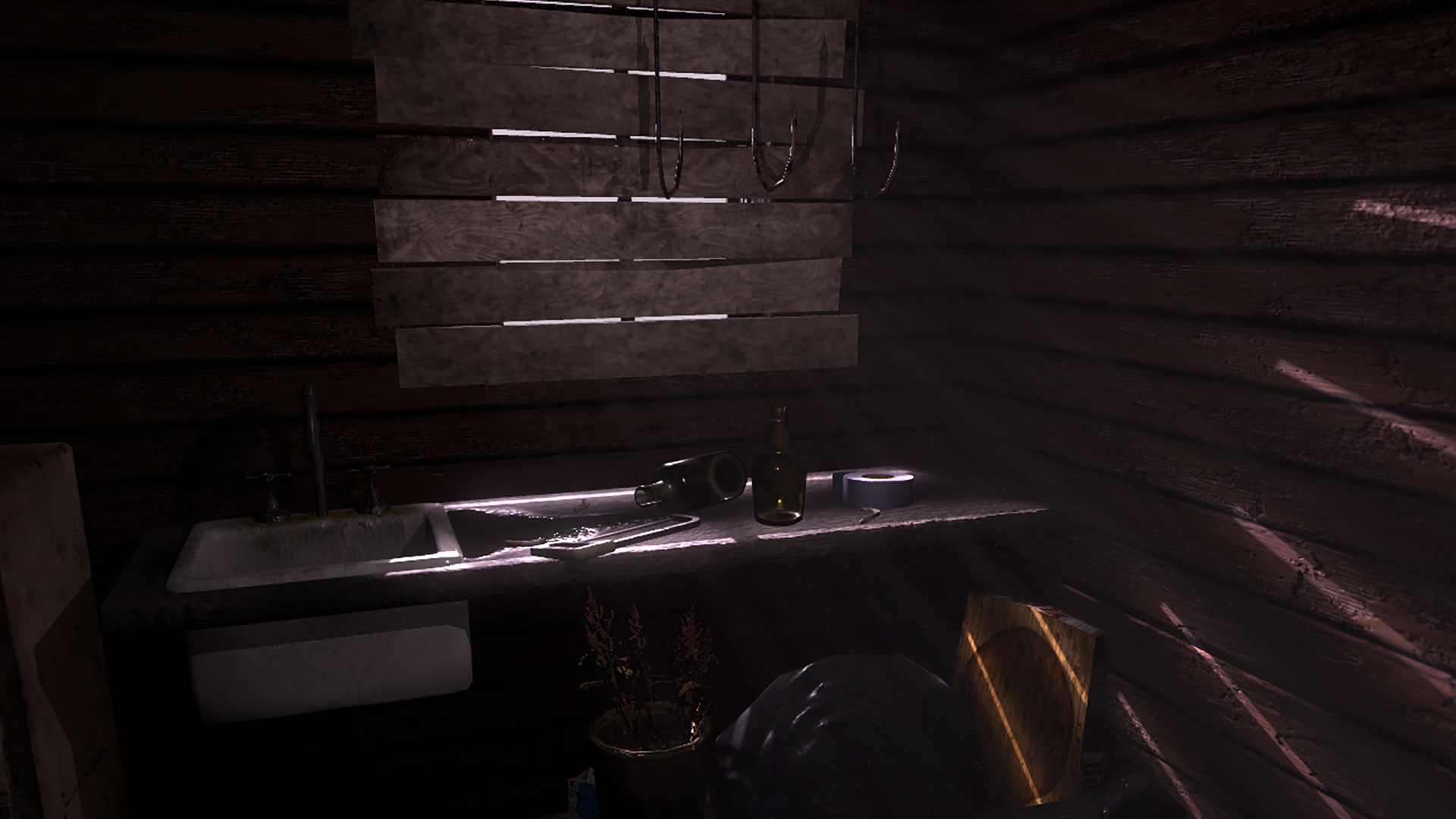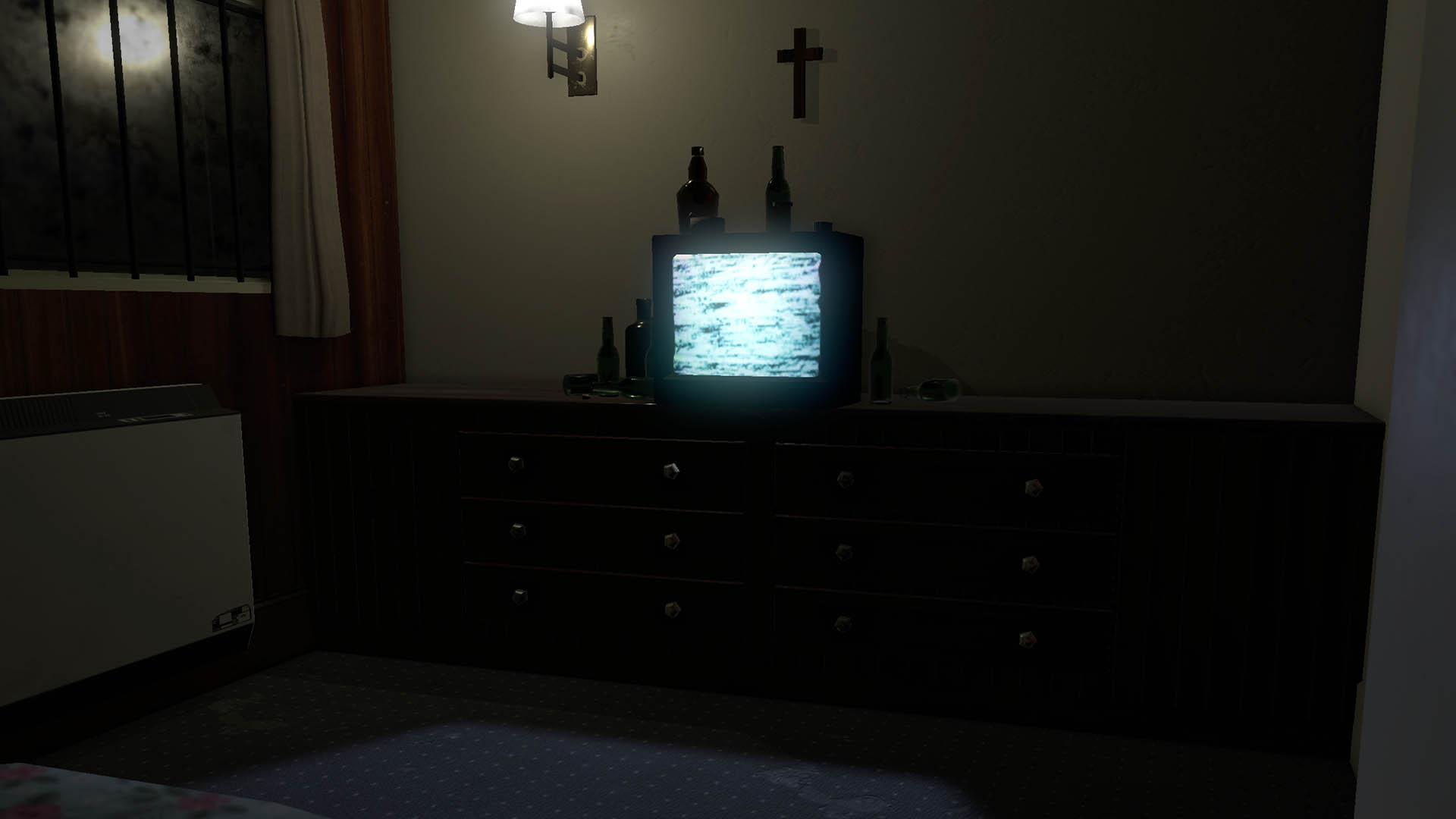When you think of a horror game in VR, chances are you imagine something full of jump scares. You’ve seen the videos, haven’t you? People jumping out of their chair, throwing off the headset, tossing away the controller? There is usually less of a focus on building a real atmosphere with characters and a narrative, but instead a focus on building suspense for cheap and fleeting moments of fright. You’d be hard pressed to find a truly sophisticated VR horror game, at least in the current state of our industry.
A Chair in a Room: Greenwater is the first step towards rectifying that issue. Whereas most horror-themed games in VR are zombie shooters or mazes littered with spooky creatures, A Chair in a Room takes a much more measured approach to the horror genre. You’ll finish the game with not only a profound sense of accomplishment – it’s a multi-hour trek through some truly terrifying settings and spine-tingling moments – but a deep sense of sadness and fear as well. A Chair in a Room tells an ambiguous story about familial abuse, drug addiction, and mental instability. It’s not the type of story that we’re accustomed to seeing in VR games to this point and it’s all the better for it. Once you’re finished, the heavy themes and dark undertones will likely stick with you for several days – I know it did for my wife and I.
If the title sounds familiar, that’s likely because you may have played or heard of a previous incarnation of Wolf & Wood’s horror experience. Previously, it was a much shorter demo released on the Oculus DK1 and Google Cardboard originally over a year and a half ago. Now, for the Vive release, the entire thing has been completely overhauled and it’s essentially a brand new game from top to bottom.
One of the landmark aspects of A Chair in a Room on the Vive is how well it utilizes the room scale technology. If your environment is large enough, the game will actually adapt to the size of your physical playspace, which allows you to actually move around the environment at all times instead of relying on any other type of locomotion system. But if your room isn’t quite large enough, you can use a teleportation “Blink” moving system instead. My room was a bit too small, but still quite large enough to move around, so I opted for a mixture of the two. I teleported when necessary, but otherwise used my actual legs to move around most of the environments.
A Chair in a Room is far from the first Vive game to really take advantage of room scale in a big way. Vanishing Realms is a great showcase of what room scale VR can do for RPGs and Hover Junkers is one of the best multiplayer Vive games – it uses room scale and full body movement as well. But A Chair in a Room is one of the first that does it so well for a real horror game that’s more than just a wave shooter.
The Affected is a classic example for the Oculus Rift, but it’s a seated experience. Dark Days, a recent Gear VR title, has a lot of content in its adventure, but it’s designed for seated experiences and lacks positional tracking.
What room scale does for horror games cannot be overstated. Never before have I found myself playing a game that was chilling me to the bone in such a robust way that I found it physically difficult to continue progressing. I’d reach moments where I knew if I turned around, something would be waiting for me. I explored dark storage rooms with a flickering flashlight, hand shaking, unsure if I wanted to continue moving forward. When you just have to press W on a keyboard or move your thumb to make a character walk, it takes you out of the experience. When you have to physically move your body, it changes everything.
The pacing feels perfect, as certain story elements and objects in the world are timed to kick off just as your gaze rests on them. Since the developer doesn’t know where you are or where you’re looking, I’d imagine that’s a difficult balancing act to perform, but A Chair in a Room does so admirably.
The fact that A Chair in a Room was created by the one-man studio known as Wolf & Wood makes it all the more remarkable. Everything from the writing to the programming and art is credited entirely to Ryan Bousfield; everything except for the voice acting, at least.
Of course, it’s not a perfect experience. There are still a handful of bugs, even a few months after release, such as some wonky difficulty picking up objects or getting certain things to register collision when I’d like them to. And the story is hard to follow at times as well.
Since it’s a psychological horror game that touches on subjects such as abuse and mental health, it fits the setting that some things would be obscure or difficult to understand, but a bit more clarity in some areas would have been appreciated. In fact, there is one segment at the end of the game that feels like an excellent ending to the story, but it continues on and even features an epilogue that seemingly aims to tie up loose ends, but ends up leaving me a bit more confused than I’d have liked.
The one-man studio of Wolf & Wood delivers one of Vive’s scariest games to date in A Chair in a Room: Greenwater. I spent about 3 hours tip-toeing my way through the story and still get goosebumps when I think about the things I saw on my adventure. You’ll experience your fair share of jump scares throughout the experience, that’s for sure, but it’s the stalking dread and terror permeating the world as a whole that will truly chill you to the bone. A Chair in a Room: Greenwater is a wonderful proof of concept for utilizing room scale VR technology to the fullest in a methodical horror setting.
Read our Game Review Guidelines for more information on how we arrived at this score.




























